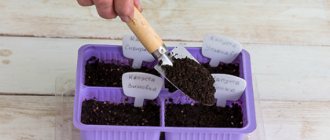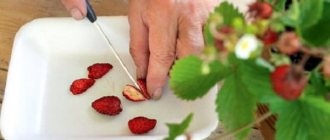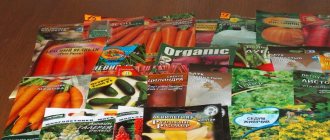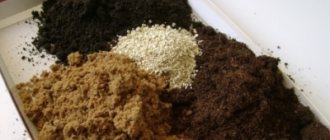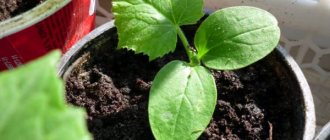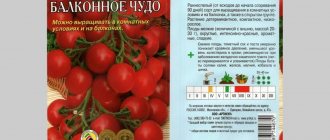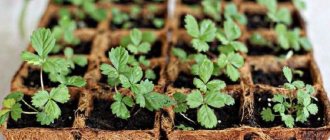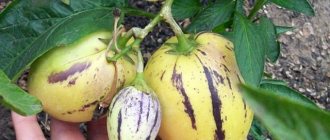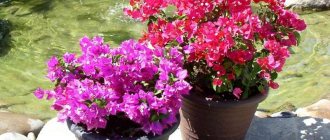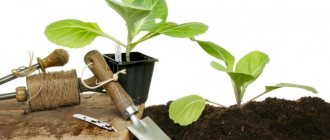Notice: Undefined variable: css_padding in /home/g/grigorig/prodachnika.com/public_html/wp-content/plugins/vote2x/vote.php on line 100 Notice: Undefined variable: css_opacity in /home/g/grigorig/prodachnika. com/public_html/wp-content/plugins/vote2x/vote.php on line 101 Notice: Undefined index: prodachnika_comvote2x5628 in /home/g/grigorig/prodachnika.com/public_html/wp-content/plugins/vote2x/vote.php on line 118 Notice: Undefined variable: css_bg in /home/g/grigorig/prodachnika.com/public_html/wp-content/plugins/experts-by-webnavoz-1.3/experts-by-webnavoz.php on line 314 Notice: Undefined variable : out in /home/g/grigorig/prodachnika.com/public_html/wp-content/plugins/experts-by-webnavoz-1.3/experts-by-webnavoz.php on line 314 Notice: Undefined variable: css_market in /home/ g/grigorig/prodachnika.com/public_html/wp-content/plugins/experts-by-webnavoz-1.3/experts-by-webnavoz.php on line 322 Cucumber, despite its exotic origin (it comes from tropical and subtropical regions of India ), has long become a traditional crop in our gardens. The maximum harvest of these tasty and healthy fruits can only be harvested in a greenhouse, since in most of Russia the climatic conditions for growing in open ground are not the most suitable. To plant a cucumber in a greenhouse, you must first grow strong seedlings.
How to grow cucumber seedlings for greenhouses at home
In an effort to obtain ripe fruits as early as possible, owners of household plots usually first grow young plants in a specially designated place, after which the seedlings, which have not yet begun to form productive organs, are transferred to the beds where their growing season continues.
Growing seedlings includes several important steps:
- selection of a suitable variety or hybrid;
- preparation of soil mixture;
- processing containers for seedlings;
- disinfection and planting of seed material;
- watering and fertilizing.
Grown cucumber seedlings at home for a greenhouse can subsequently be planted in protected soil. Moreover, in heated greenhouses you can harvest cucumbers all year round by preparing the seedlings on time.
You can grow seedlings both in special shelter nurseries and at home. It is the second option that is most often used by gardeners.
Advantages and disadvantages of the seedling method
Each owner of the plot decides for himself which method of growing cucumbers suits him best. Growing young plants for greenhouses at home allows you to get an early harvest. Moreover, plants bear fruit much longer compared to those that were planted with seeds in the garden. Using the seedling method, it is possible to grow heat-loving vegetables in regions with harsh climatic conditions. In this case, much less seeds are consumed, and the space in the greenhouse is significantly saved. However, you need to understand that preparing seedlings involves a considerable amount of labor, time and finances, which are necessary to create suitable conditions for plants, grow, transport and transplant seedlings.
How to plant cucumber seedlings correctly
Everyone sows cucumbers for seedlings in their own way. In addition to classical planting, summer residents are mastering new techniques, learning about them from friends or from the Internet. Each method has its own advantages and disadvantages. Let's take a closer look at them.
In cups
During traditional planting, the seeds are placed in pairs in cups, deepened by 1.5 cm. When shoots appear, the weaker seedling is removed, leaving only a strong plant.
If the seeds are expensive, they are planted in the soil one at a time.
The crops are sprinkled with a thin layer of soil on top and moistened with a spray bottle. All containers are placed in a common tray, covered with film and kept warm until germination. You will have to wait 5-7 days for this event.
In peat tablets
For planting cucumbers, use peat tablets of the largest size.
The advantage of the method is that seedlings grown in this way do not require fertilizing.
- Before sowing, the tablets are placed in a container and filled with water.
- After they are saturated with moisture and swollen, in the center of each of them, use your finger to make a depression where the seed will be placed.
- Then the seeds are buried in peat with a toothpick to a depth of 1 cm.
It is easy to care for such seedlings. You just need to pour water into the tray from time to time, the tablets themselves will bring up the required amount of moisture. Seedlings are transplanted into the ground together with a peat shell, which allows them to avoid damaging the roots.
Into the shell
Planting seedlings in shells saves soil and space on the windowsill. In the future, such a shell for the roots will serve as an additional fertilizer.
- It will be necessary to prepare the required amount of shells from boiled eggs, preserving its integrity as much as possible.
- The shell should only be broken on one side.
- A drainage hole is made in each of them with a needle, and soil is poured.
- The shells are then placed in an egg rack.
- The soil is moistened and one seed is placed in each “house”. After this, the crops are sprayed again.
The disadvantage of this method is that the volume of soil is too small, insufficient for the development of the plant. It is difficult to grow full-fledged seedlings in such conditions.
Into the sawdust
It is necessary to use small sawdust that imitates the structure of the soil as much as possible.
- They are first scalded several times with boiling water to disinfect and wash off any remaining resin.
- Then the substrate is placed in a plastic container, filling it one quarter, and filled with hot water.
- After the sawdust has swollen and cooled a little, cucumber seeds are laid out on their surface and the same swollen and warm sawdust is sprinkled on top.
- Now the container must be closed with a lid or film and placed in a warm place for germination.
- After two true leaves appear, the seedlings can be planted in the ground.
When sowing using this technology, seedlings appear within 2-3 days.
In diapers
For this method, it is convenient to use cellophane lunch bags or pieces of plastic film measuring 20x30 cm (a little smaller is possible). It is important that the general rule be followed - cucumbers should be planted in separate containers, as they do not tolerate picking well. A little fertile soil is poured onto each piece of film and rolled into a tube.
Makeshift cups are placed vertically in a common container, the bottom of which is sprinkled with sawdust. The soil in the diapers is moistened and one seed is placed in each bag, deepening them with a toothpick. The top of the seedlings is covered with film to create greenhouse conditions. Seedling loops may appear as early as the 4th day.
Planting cucumber seedlings “in diapers”: video
Landing without soil
Some people find this method surprising. Is it really possible for seeds to sprout without soil? Yes, it's possible. This method has already been tested by more than one thousand gardeners. Each seed contains a supply of nutrients that will last for some time. It is this feature that this method suggests using.
When growing cucumber seedlings this way, you do not need to spend money on buying soil. And you will need a little space on the windowsill.
- For sowing you only need seeds and toilet paper rolls.
- First you need to prepare paper strips 40 cm long. It is better to take toilet paper that has two or three layers.
- The paper tapes are laid out on strips of plastic film and moistened by spraying, then the seeds are placed with tweezers at intervals of 5 cm, 1.5 cm from the top edge.
- A strip of toilet paper is again placed on top, which is also sprayed until wet.
- The last layer is again plastic film.
- After this, the structure is carefully rolled up so that the seeds do not scatter and secured with a rubber band.
All that remains is to place the “roll-your-own” cigarettes in glasses or cut-off plastic bottles with a little water at the bottom. The seedlings are placed in a warm place, covered with film on top.
Growing cucumbers without soil, super way: video
What type of seeds is better to use: hybrid or varietal?
Owners of country plots who grow vegetables pay great attention to the choice of planting material. At the same time, they are guided by their preferences regarding the quality characteristics of the fruit, the timing of fruiting, as well as the yield of the crop, the characteristics of its development, the requirements for environmental conditions and resistance to various types of adverse influences. Today, consumers are offered a wide range of cucumber varieties and their hybrids. It is impossible to say unequivocally which type of planting material is better. Both varieties have their advantages and disadvantages.
- Variety
As a result of selection, seeds with distinctive characteristics are selected. They retain all the characteristics of the parent material, but the genotype is different. Varietal seeds can be collected from plants you like yourself, which is a big plus. Most often, such plants belong to the bee-pollinated category and are less productive. However, their seeds are very inexpensive, and the crops themselves are not too capricious about observing the rules of agricultural technology when growing them.
- Hybrid.
By crossing a number of varieties to improve specific characteristics needed by gardeners (disease resistance, endurance, productivity, etc.), it is possible to create material for the production of marketable products. In this case, plants with one genotype are obtained and in the second generation all advantages are lost, which is why it is useless to collect seeds from them. It is possible to reproduce the desired characteristics only in laboratory conditions. Therefore, seed material for planting has to be purchased new each time. But hybrid plants are popular for their consumer characteristics, productivity and strong immunity.
To distinguish a variety from a hybrid, the name of the latter uses the inscription F1.
Greenhouse owners can use both varietal material with the properties they like and hybrids for planting. Moreover, to extend the fruiting period, it is recommended to choose varieties with different ripening times. For example, so that 20% of the total quantity is made up of ultra-early and late varieties and hybrids, and the main volume of planting material is chosen in the middle period, which begins to bear fruit closer to August. With this scheme, it will be possible to provide the family with a harvest until the fall.
Preparatory work before sowing
The quality of the seedlings, and therefore the crop yield, will depend on how thoroughly the seed material and soil are prepared for sowing. You need to take care of this issue in advance so that by the time of planting you have the seeds of the desired variety and suitable soil.
Seed selection
When choosing seeds, it is better to give preference to a hybrid.
Such plants produce a friendly and abundant harvest of high-quality fruits. Hybrid cucumbers are marked “F1” or “F2” next to their name.
It should be remembered that the seeds of hybrids do not transmit the maternal qualities of the crop to the next generation. Seed material will need to be purchased anew every year. The method of cultivation must also be taken into account.
For greenhouses and greenhouses, you should purchase cucumbers of the parthenocarpic type, which do not require pollination by insects. On packages with such seeds, the manufacturer makes a note that the variety is intended for indoor soil.
Special salad varieties have been bred for fresh consumption and for preparing salads. Their fruits have a sweet and delicate taste. Such cucumbers are not suitable for pickling, since the pulp becomes too loose after processing.
Seed preparation
Pre-sowing seed preparation includes:
- Calibration. Calibrate the seeds in a solution of table salt (2 teaspoons per glass of water). The seeds are placed in a glass and stirred. Those that remain at the bottom are suitable for planting; the floating seeds can be discarded.
- Warming up. Before sowing newly purchased seeds, it is recommended to warm them up for 2 days near a heating radiator. This technique will help reduce the number of barren flowers.
- Disinfection. Purchased seeds from well-known manufacturers do not require disinfection. If you use your own seed or seed purchased on the market, etch it in a saturated solution of potassium permanganate, holding it for 15-20 minutes. Then the seeds need to be washed in clean water and dried.
- Swelling. This stage of seed preparation accelerates their germination. The seeds are kept in water at room temperature until they swell, then they are slightly dried and sowing is started.
- Hardening. Hybrids and greenhouse varieties do not need hardening. For ordinary varieties, hardening for 24 hours is recommended. The seeds are wrapped in a damp cloth and placed in the refrigerator.
- Germination. It is carried out in damp sawdust or sand at a temperature of 25-30 degrees. When a small root is formed, the seeds are placed in the soil.
It is not necessary to use all methods at once. Each of them is used as needed. Moreover, the seeds will germinate without any preliminary preparation, but this will take more time.
Selection of soil mixture
The soil for seedlings of cucumbers should be light, loose, nutritious, with neutral acidity. There is no need to disinfect the purchased mixture.
When preparing the substrate yourself, mix 2 parts of compost and 1 part each of turf soil, sand and peat.
Some people add sawdust to the mixture and replace the sand with vermiculite. The main thing is that the soil acquires sufficient looseness and is fertile. Self-prepared soil will need to be calcined in the oven and additionally shed with a solution of potassium permanganate.
Time to sow seeds to obtain seedlings at home
You should know that from the moment the seeds are planted until the young seedlings are transferred to a permanent place in a greenhouse or greenhouse, 25...35 days usually pass.
When planting seedlings, many gardeners are guided by the dates recommended in the lunar calendar. However, a more reliable method of determining the right moment to start preparing seedlings is the long-term forecast of the Hydrometeorological Center.
For different regions, the timing when you can sow seeds for seedlings varies.
The time for planting seedlings at home also depends on the type of shelter into which the seedlings will subsequently be transferred.
Table. Timing (approximate) of planting seedlings in a permanent place.
| greenhouse material/region | Central Russia (including Moscow region) | Ural, Siberia, North-West Russia | Southern regions of the Russian Federation |
| Polycarbonate | Beginning of May | Mid May | Early April |
| Film | Mid May | The end of May | Mid April |
| Temporary shelter | The end of May | The beginning of June | — |
When choosing the time to plant cucumber seedlings for the greenhouse, you need to remember that you will have to transfer the plants to the shelter in about a month.
When growing cucumbers in heated structures, the time for planting seedlings is not regulated. You can plant plants in them throughout the year.
Choosing containers for seedlings
The era of cups made from polyethylene is gradually becoming a thing of the past. Modern gardeners either adapt containers for mayonnaise, sour cream and other products for growing seedlings, or buy special containers. In the first case, you need to remember that cucumber seedlings are demanding on the volume of soil, and therefore the container should be large, ideally from 0.5 liters. Containers sold in stores also have certain requirements.
Plastic cups
It is important that the cups do not wrinkle; this will injure the roots of the cucumbers. For these plants, it is better to buy containers with a removable bottom: this way you can remove adult seedlings with minimal injury.
If you buy wide cups, at least 10-12 cm in diameter, you don’t have to remove the seedlings at all. It is enough to remove the bottom and plant the plant in open ground. This is good protection against mole crickets.
Peat pots
If you don’t expect great results from peat pots, you can grow cucumber seedlings in them. The advantage of such containers is the possibility of planting in the ground without removing the seedlings - the roots grow through the soggy walls. However, the following conditions must be met:
- It is necessary to have a strong tray in which you can put peat pots with seedlings;
- It is better to make the bottom with holes to drain excess water, otherwise the walls will become wet and damaged;
- The walls of the pots should be of medium thickness.
You cannot pour soil into such a container to the top, you need to leave 1-1.5 cm of space, this will protect the pots from damage. You will have to water the cucumbers more often; the soil here will dry out faster. Otherwise, the technique for growing cucumbers is the same as in other containers.
Peat tablets
Due to the high cost of peat tablets, this method is good when you need to grow 10-20 cucumber bushes. The tablets are compressed peat enriched with nutrients. Before sowing the seeds, the tablets are soaked in water, they swell, increasing in size several times. Cucumber seeds are placed in the resulting depression, pressing them with a match to a depth of 1 cm.
Water the seedlings by pouring water into sealed trays in which the tablets are placed. Other than watering and temperature control, no action needs to be taken. The seedlings are planted in the ground without removing them from the peat mass, so the roots are not damaged.
For cucumbers, peat briquettes are one of the best options.
Cucumber seed planting technology
The process must begin with processing the seed material. This stage allows you to increase the percentage of seed germination, as well as their immunity to diseases.
Step-by-step instructions for preparing seeds:
- First you need to sort the seeds, removing empty and defective ones.
- It is recommended to warm up the remaining seeds by placing them near a heating device for several days.
- To determine the material that will not sprout, you need to prepare a salt solution (1/4 tbsp/100 ml). Seeds are placed in it and left for 10...15 minutes. Those that remain on the surface should be discarded.
- It is important to disinfect seeds whose quality is not guaranteed (produced by unknown companies or collected independently) in a solution of potassium permanganate (hold in it for a quarter of an hour).
- Soaking in a nutrient composition (for example, a growth stimulant) helps improve plant growth and increase productivity.
Prepared seeds can be planted in the ground. However, you can get seedlings ready for planting in a greenhouse a few days earlier by first germinating the seeds. To do this, you can use gauze moistened with water or moistened sawdust, where they are placed. When small roots appear, the seeds can be planted. You should act carefully, trying not to damage the sprouts.
You can also harden the seeds, which improves the plant's resistance to adverse influences. To begin with, they need to be kept for half a day at room temperature, and then placed in the refrigerator for 2 days.
After the procedures have been completed, the seeds can be planted in prepared containers. It is recommended to use the potting method, since in this case, when replanting, the risk of damage to still weak roots is minimized. In addition, the plants will receive more nutrients compared to those that were sown in common boxes. When growing cucumber seedlings for a greenhouse in individual pots, the seedlings will no longer need picking, which is a strong stress for them. And they take root in a permanent place much faster.
How to prepare soil and containers for seedlings
To plant seeds, you can use ready-made soil, which is intended for growing vegetables and is sold in retail outlets. It contains all the nutritional components that cucumbers need. In this case, no preparation will be necessary. The soil can be immediately distributed into pots.
You can also prepare your own soil mixture at home. Its main components: peat (2 parts), humus (2 parts), sawdust (1 part). In addition, it is recommended to add 50 g of ash and half a teaspoon of fertilizers containing nitrogen, potassium and phosphorus, for example: urea, superphosphate and potassium sulfate. To disinfect the soil, you can use boiling water or a solution of potassium permanganate. Also, steaming the soil in the oven allows it to be disinfected.
As containers for seedlings, you can use any container with a volume of 0.3...0.5 liters, which also needs to be doused with boiling water. Holes must be made in the bottom of the pots to drain excess liquid. Also an excellent option are peat pots, which can later be placed in holes in the garden bed without removing the seedlings from them. Such containers will soon decompose in the ground. Many gardeners also use peat tablets, which increase in size when exposed to moisture. They simply contain seeds. They do not require disinfection.
The prepared soil mixture is poured into the container (they should not be filled completely with soil; soil can be added later). The seeds are placed at an angle of 45 degrees. Their nose should be on top. It is better to place 2 seeds in each pot to guarantee germination. Subsequently, the one that seems weaker can be removed. The seeds are sprinkled with earth on top, after which the future seedlings are watered. Before sprouts appear on the surface (they should be expected on the 3rd…7th day), it is recommended to cover the containers with polyethylene.
Preparing soil and containers for sowing
Containers for sowing any seeds (not just cucumber) must first be washed and disinfected. Since cucumbers do not like picking, it is better to immediately plant them not in common containers, but in separate pots, cups or peat tablets.
As for the soil for growing cucumber seedlings, you can take a ready-to-use universal seedling soil mixture in the store or prepare it yourself by mixing peat, turf soil, humus (vermicompost) and sawdust in equal parts.
If you prepared the soil yourself, before sowing the seeds it must be disinfected - spilled with a weak solution of potassium permanganate, calcined in the oven at 70-90°C or steamed.
Fill the seedling cups with soil and thoroughly water them with settled water before sowing.
Conditions for obtaining good seedlings
To grow seedlings, it is better to use two to three year old seed material (those collected last season do not germinate well). The air temperature during the day should not fall below +18, and at night – +12 degrees.
Caring for seedlings is not difficult. You won't have to dive it. It is enough just to moisten the soil (when it starts to dry out) and apply fertilizing two weeks after the emergence of seedlings. Mineral or organic based compounds can be used as fertilizer.
You can plant ready-made seedlings in a greenhouse when the air temperature has stabilized and return spring frosts do not threaten the plantings. It is very important that the soil warms up to at least +15 degrees at this time. If the time for transferring young plants has already come, and the soil in the shelter is not yet warm enough, it is possible to heat it up. After removing the top layer, you can lay loose horse manure. As it decomposes, it will release a sufficient amount of heat. You can also use foamed polystyrene, rotted organic matter or polymer bottles, which are buried at a depth of 0.5 m.
Care before planting in the ground
As soon as the seeds hatch, the film is removed and the seedlings are placed on a windowsill or shelves in the greenhouse. The air temperature in the first 3 days should be about 18-19 °C, this will stimulate the development of the plant. Then the temperature is raised to 22-25 °C and maintained at this level all the time.
Air humidity should be between 70-80%. If seedlings are grown in an apartment or in a private house, to create such conditions, wet fabrics are hung on heating radiators and the air is humidified with a sprayer.
If the length of daylight is not enough, fluorescent lamps are installed. The distance between the top of the plants and the lamps should be at least 20 cm, and the lighting time (taking into account the length of the day) should not exceed 12 hours. If it is not possible to place seedlings on window sills facing south, install reflective film or foil in close proximity to the containers. The reflected light will make up for the deficiency of direct sunlight.
When growing seedlings, the following work is required:
- Watering. The first is 3 days after germination. Leave the water in the room, its temperature should be about 25 °C. Water the seedlings as needed, by sprinkling or using a sprayer.
- Feeding, preferably with ready-made, carefully balanced formulations. The preparations “Kemira” and “Rastvorin” have proven themselves well, and the humic compositions “Viva” and “Ideal”. The first feeding when two true leaves are formed, subsequent ones according to the instructions.
- Hardening a week before planting seedlings in the ground. Begin at an air temperature of at least 14-16 °C in the daytime, from one to two hours to 8-10 hours. Protect the plant from drafts and direct sunlight. 2-3 days before planting, the seedlings are left outside and at night.
Picking cucumber seedlings will do more harm than good. Therefore, young plants are immediately planted in a permanent place along with a lump of earth, trying not to crush or damage the roots.
In most cases, loosening is not necessary. If a crust has formed on the surface, it must be carefully destroyed.
What to do to prevent seedlings from stretching
Excessively elongated sprouts are a real problem for gardeners. Transferred to a greenhouse, they do not take root well and one cannot expect a good harvest from such plants. But, if you understand the reason for this condition of the seedlings in a timely manner and eliminate it, the seedlings can still be saved.
- If you don’t get the weather right and don’t plant the cucumbers in the greenhouse on time, they outgrow and, being in pots that are already too small for them, become pale and elongated. Therefore, the timing of planting seeds must be taken seriously.
- Seedlings also stretch out due to lack of light. If seedlings are planted in the autumn-winter period, it is necessary to install additional lighting.
- Incorrect temperature conditions can also cause problems with the condition of the seedlings. Despite the heat-loving nature of cucumbers, indoor heat is unacceptable. Pots should not be installed next to heating appliances. The room also needs to be ventilated periodically.
- Seedlings should not be overly moistened. Watering too frequently causes plants to divert the nutrition and water they receive to stem growth.
- Cucumbers stretch both from nutritional deficiency and from excess.
- Plants that are planted too often develop thin stems with nodes located at a great distance from each other. This happens because there is not enough nutrients and light, which the seedlings begin to reach for.
You can help the seedlings by adjusting the conditions. In addition, it is useful to use growth regulators that inhibit the growth of green mass, directing all the plant forces to the formation of roots.
Planting seedlings
Seedlings are considered ready for planting when they have tendrils, several leaves and a thick stem at least 20 centimeters high. Before directly planting the seedlings, several rows of wire or strong silk thread are stretched along the rows, at a height of one to two meters, for further gartering of the stems.
Planting of seedlings occurs in loosened, heated and moistened soil. In the holes, located in a checkerboard pattern at a distance of 50 centimeters from each other, and watered with a solution of mineral fertilizer. Be careful not to damage the root system.
What problems can you encounter when growing seedlings?
An early harvest is the dream of any gardener. Many people start planting seeds too early to produce seedlings. But a favorable environment and good care can have negative consequences in the case of late planting of plants in protected soil. Developed bushes begin to bloom at the allotted time, while still on the windowsill. When they are transferred to a greenhouse, they do not take root well, get sick and often die.
Cucumbers, especially those grown in shelters, often get sick. They can be affected by bacteria, viruses and fungi. But, if you notice the symptoms of the disease in time and begin treatment, you can save the harvest.
Common seedling diseases
It would seem that the plants were planted in closed ground. Where can diseases come from? Poor disinfection of the greenhouse, contaminated soil and seeds, violation of agrotechnical rules when growing cucumbers - all this leads to crop diseases.
- Anthracnose. A fungal infection does not often affect vegetables. However, if the bush has been infected, it is not easy to cure it. A sign of the disease is the appearance of yellow-brown spots that merge into ulcers. The infection gradually spreads from the green mass to the fruits. You can save the harvest by treating the cucumbers with Bordeaux mixture. In case of severe damage, the diseased crops will have to be destroyed.
- Fusarium. Plants infected (most often through the root system) with this disease begin to wither and soon die. Previkur can help in the early stages of the disease.
- Powdery mildew. It can be real or false. Their causative agents: different types of fungi. The symptom of the first disease is the appearance of small white spots on the foliage, and then on the stem and fruits. The second appears in the form of oily brown spots on the leaves, and a grayish coating on the bottom of the leaves. You can cope with or at least stop the spread of powdery mildew with the help of Baktofit and Fitosporin-M; treating bushes with Topaz helps against downy mildew.
Also, if growing conditions are violated, seedlings can develop rot (affecting roots and stems), mosaic virus and olive spot. Spraying with fungicides is the most reliable way to treat plants.
Diseases and pests of cucumbers
Leaves turn yellow and wither
If the leaves of cucumbers turn yellow, wither and wrinkle, most likely the plants are damaged by disease or have been attacked by pests. Various diseases and pests of cucumber seedlings are the result of improper care.
High humidity causes white rot, anthracnose, and powdery mildew to appear on plants, and root rot develops on the roots. When humidity is high, spider mites multiply.
Plants on which black plaque appears are destroyed. Unaffected seedlings are treated with antifungal fungicidal drugs.
Gray rot appears as large gray or brown spots. The affected areas are sprinkled with ash, and watering is temporarily suspended.
Powdery mildew appears in the form of whitish, reddish spots. The affected areas are powdered with ash. Plants are sprayed with a solution of colloidal sulfur.
White rot appears on all parts of plants. Damaged areas should be sprinkled with fluff lime. Watering is reduced, plants move away from each other.
When white or light yellow dots appear and grow over time, spider mites can be seen on plants. It weaves a thin web around the bottom of the leaves and pierces the leaves, drinking the juice.
When fighting mites, insecticides are used: Fosbecid, Fitoferm, Agravertin or Karbofos.
Melon aphids can also damage plants. This small insect settles on the lower part of leaves, shoots, flowers, ovaries, causing the plant to curl and dry out. If larvae are found, they are washed off with a cotton pad soaked in a soap solution. In case of severe damage, insecticide treatment is carried out. Plants are sprayed 2 times with an interval of 3 days.
To prevent mites and aphids, plants can be sprayed with clean water and a weak solution of potassium permanganate.
When it is possible to transfer seedlings to a permanent place, planting technology
In order for the seedlings to take root well, develop normally and subsequently produce a bountiful harvest, they need a warm climate. During the day in the greenhouse it should be +22...+28, at night - +16...+18 degrees. The difference between these temperatures should not exceed 7-8 degrees. The soil must also be warm (warmed up to no less than +15...+18 degrees), otherwise there will be no good fruiting.
Planting should be carried out in the early morning or evening; on a cloudy day, the operation can be carried out at any time. The soil in the beds needs to be moistened in advance. It is recommended to pour a little wood ash into the recesses, the size of which is slightly larger than the dimensions of the pot. After this, the holes are again watered with settled water. The plants are carefully placed in the holes along with a lump of earth. The soil is added and the bed is moistened again.
After this, all that remains is to regularly water and fertilize the plantings, form bushes in a timely manner, and maintain optimal temperature and humidity values.
If not properly cared for, seedlings not only grow poorly and later begin to form fruits, but also the consumer qualities of cucumbers deteriorate significantly. For example, if a problem arises: why are cucumbers bitter in a greenhouse: what to do, you need to pay attention to the watering regime, type of fertilizer, temperature and lighting. And you shouldn’t delay collecting ripe greens. In this case, they also begin to taste bitter.
Properly planted seedlings quickly adapt to new conditions and begin to develop quickly, soon delighting the owners with a large number of tasty vegetables.
Caring for seedlings after transplantation
After planting cucumber seedlings in open ground, there is less hassle: there is no need to scrupulously monitor temperature and humidity. However, you shouldn’t stop working, otherwise you won’t get a good harvest.
Basic rules of care in the first weeks:
- Watering once every 5 days in cloudy weather, more often in sunny and hot weather. The consumption rate for young plants is 10 l/m2.
- Renew the mulch as needed; its thickness should be about 5 cm.
- The first feeding is no earlier than after 2 weeks. A nitrogen-potassium composition is used.
After 2 weeks, the plant is considered an adult; care for it will be appropriate. You can read about this in the next article.
It is important not to over-moisten the soil in the first weeks of life of cucumbers in open ground; this can lead to the death of the bushes due to the death of the roots.
Transshipment
Cucumber seedlings grow very quickly. After 10 days, the roots will fill the entire volume of the pot, and the plants will need to be transplanted into a larger volume. This must be done carefully, the stem of cucumber seedlings is very fragile, and the roots cannot tolerate severe damage. The seedlings are carefully shaken out of a small glass. In a large glass, pour a little soil at the bottom and place a plant with a lump of earth there. Then add soil into the spaces between the walls of the glass, gently shaking or tapping the glass. Finally, the seedlings are well watered.
Common mistakes
- The biggest mistake is to grow seedlings for as long as possible and plant already mature plants with ovaries on the site. Such a seedling has an overgrown root system, so it will almost certainly be damaged during transplantation. In addition, in this case, the seedlings will get used to “home” conditions, so they will take root in the open air for a long time and may even die.
- Another mistake is non-compliance with the heat treatment of the seed and the application of large amounts of fertilizer . Because of this, deformation of the cotyledons occurs, which will then affect the harvest.
- Also, gardeners often neglect temperature and lighting , simply maintaining average values throughout the entire time of growing seedlings. Because of this, the plants will stretch out and be very fragile.
Optimal conditions for the growth of cucumbers
There is a reason why cucumbers and tomatoes are planted separately. Although some manage to get good results by growing them together. Cucumbers need special conditions to grow and have a good harvest: light, heat, humidity, watering and others. The growing conditions for cucumbers are almost the same as for all pumpkins.
Watering
Cucumber is a very responsive crop to watering. It must be regular, without this the harvest will not be good. In dry years, it may not exist at all, since the water is instantly absorbed by the soil. Watering in a greenhouse or hotbed should be done frequently; the leaves should not be allowed to wilt.
This feature is associated with the structure of the cucumber root system. It is located close to the soil surface, so the plant does not have the opportunity to take water from the depths, as, for example, tomatoes do. The health of the plant depends on how often you water it. In hot weather, when fruits are forming, this should be done every day.
Cucumbers are recommended to be irrigated using the sprinkling method. With this method, water is poured out in small drops, partially evaporating. This increases the air humidity in the greenhouse, which is very important for cucumbers. The soil is gradually saturated with water, which allows the roots to better absorb moisture.
Water consumption per 1 m2 is approximately 15-25 liters per day or every other day, depending on the weather. When fruits form, water consumption increases and amounts to 20-30 liters.
Do not water cucumbers with cold water. They used to say that this makes the fruits bitter. Now the fruits are genetically sweet, but cold water is not advisable for watering because it increases the likelihood of plant disease.
Feeding
We must not forget about fertilizing. Cucumbers grow rapidly, and modern hybrids produce very high yields. In order for the plant to be able to “feed” them, it is necessary to apply fertilizer 1-2 times a month, literally from the first days.
Fertilizers are organic and mineral. Organic are natural fertilizers. These include manure, green fertilizer from grass, ash, and chicken droppings. When growing seedlings, only ash is used from the listed fertilizers when preparing the substrate for sowing seeds.
Before planting in the ground, seedlings are fed 1-2 times with mineral fertilizers. Preference is given to nitrogen or complex ones with a predominance of nitrogen, because first the plant must increase its green mass and become stronger.
After planting in the ground, cucumbers are not fed for 2 weeks until the plant has completely taken root. In addition, there is usually enough nutrition in the holes. After this, you need to start “feeding” green fertilizer, a solution of mullein, chicken droppings and ash. From the beginning of flowering, potassium fertilizers are added.
Light mode
The time of fruiting, as well as the yield of cucumbers, depends on the intensity of light and the length of daylight hours. The second has a greater effect on plant growth. Cucumbers are short-day plants, so they need a 10-12 hour day to fully develop. During the period of growing seedlings, this is no less important. If there is not enough light, then conditions of 10-hour daylight hours are created using artificial lighting.
Temperature
Cucumber is a very heat-loving crop. If it's cold outside, you can't expect good harvests. In addition, the plants will be weakened, which will affect the increase in morbidity. The average temperature in the greenhouse should be maintained at 17°C. But for the first time after sowing, the temperature should be 25-28 degrees.
That's why it's better to grow cucumbers at home first. Severe cold spells have a negative impact on growth. But too high temperatures are also harmful to cucumbers.
If on hot days the temperature in the greenhouse is above 30C, then you need to ventilate and spray the plant to reduce the temperature.
Humidity
Cucumber has an increased need for air humidity. For cucumbers, this norm is 85-95%. If you compare it with peppers, the difference is very big. Peppers need a moisture content of 60-65%. At low humidity, the process of pollination and fruit set is significantly reduced.
Of the greenhouse crops, cucumber is perhaps the most moisture-demanding crop.
Ventilation
At first, when the cucumber seedlings are still small, you need to ventilate the rooms where they grow very carefully. Cucumbers do not tolerate drafts at all. And in the greenhouse it is necessary to ventilate, especially when the thermometer rises above 30C.
The windows are opened only on one side to avoid drafts.
Bush formation
In order for cucumbers to produce a bountiful harvest and bear fruit for a long time, the plant must be shaped correctly. There are a lot of opinions on this matter, but the overwhelming majority believes that formation is necessary.
Topping
Pinch the cucumber vines as follows:
- the first 40-50 cm - the shoots “blind” completely;
- pinch the next 40-50 cm above the first leaf;
- the next 40-50 cm above the second;
- then 40-50 cm above the third;
- and so on.
Some gardeners cut off the plants' tendrils to save energy. For the same purpose, not all ovaries are left; some are removed. If it is noticed that when fruits are formed in bunches, some do not have enough nutrition and they begin to dry out, then one fruit at a time is left in the axils. In this case, watering and fertilizing are increased.
It turns out like a “herringbone” in reverse. At the end of growth, under the roof, the plants set fruits freely. Some people pinch the whip under the roof so that it does not waste energy on growth. All potential is spent on the formation of fruits.
It has been noticed that without pinching, the yield is significantly reduced.
Stepsoning
Stepsons on cucumbers are only appropriate when the stepsons are removed at the beginning of growth, half a meter above the soil surface. There is no need to do this higher, since many large ovaries are located on the side shoots. The meaning of pinching is that the plant’s forces are released for further growth and development.
For this procedure, carefully bend the leaf and remove the shoot with a cloth or knives. Subsequently, the leaves at the bottom of the vine dry out and the main stem becomes bare. There are many root primordia on it. If you lay the stem in a ring, roots will begin to grow very quickly in this place and the cucumber will have additional nutrition.
Tying up
Cucumbers are tied up in a greenhouse for the following reasons:
- plants in this position are better illuminated by the sun;
- the lashes are ventilated and the cucumbers get sick less;
- they are easier to care for;
- plants do not intertwine with each other;
- Almost 100% of flowers and ovaries are preserved;
- watering and loosening are simplified;
- good visibility when picking fruit.
You need to start tying up the plant at one month of age, when its height reaches 30-40 cm. There are several types of materials from which ropes for cucumbers are made. Everyone chooses the best option for themselves. For some it is rags, for others it is nylon. Some people opt for synthetic twines, which are sold in hardware stores.
The length of one twine is 2-2.5 meters. One end is attached to the ceiling, and the other should freely go down. The lower end is carefully attached between the lower leaves. As the lash grows, it wraps clockwise around the twine.
How to transplant correctly
Seedlings that have reached a certain age and are pre-hardened can be replanted. The day before this important procedure, the seedlings are generously watered so that the earthen ball softens and does not damage the roots of the plants.
Compost is added to the designated area in advance, holes are made, and watered.
When planting seedlings in peat cups, they are positioned so that the edge of the hole is flush with the edge of the cup. Next, 3 liters of warm water are poured into each hole. Moreover, completely healthy seedlings are placed vertically, overgrown plants are placed at an angle. The root collars of seedlings are sprinkled with sand, since during transplantation the seedlings weaken and root rot can take advantage of the opportune moment to attack.
If the seedlings were grown in other containers, then they are planted by transferring them without disturbing the earthen ball. The roots of grown seedlings are quite fragile, so every effort must be made to prevent damage. The bottom of plastic glasses is simply cut out, and the earthen lump is pushed out from below.
When preparing holes, they are made for short-climbing varieties every 15 cm, and for long-climbing varieties a gap of 30 cm is left.
Deepen the cucumber seedlings to the cotyledon leaves; The sprinkled soil is easily squeezed with your hands, watered and mulched. Abundant watering of cucumbers is indicated for the first 3-4 days, and then the regime is gradually changed.
When planting greens in greenhouse areas, they use 2 types of plantings:
- Strongly branched hybrids are planted in one row, with an interval of 40-45 cm.
- Weakly branched crops are grown in 2 lines with an interval of 30 cm, or in a checkerboard manner.
Planting density is determined by varietal characteristics.
Useful tips
- To prevent sprouts from stretching, the usual temperature is reduced for several days to +17°C. Having received a little stress, the cucumber slows down in growth.
- If the seedlings begin to fall on their side, towards the light source, they are turned 180°, and additional illumination must be used.
- Special compounds that slow down growth will help prevent cucumbers from overgrowing: “Tour”, “Campozan”. The compositions do not affect the process of foliage formation and bud formation. After using the drugs, the stems become stronger and thicken a little.
- If the stem stretches strongly before the leaves form, it can be carefully folded into a ring and sprinkled with soil on top. After watering, the stem will begin to take root. Thus, the seedlings will become much stronger.
- If you had to transplant seedlings into insufficiently warmed ground, everything around the plant should be covered with a black film that accumulates heat.
Problems and their solutions
It happens that infection with diseases is excluded, but some problems still arise on the plantation. Let's look at some of them.
No ovaries
Reasons for the problem of ovary formation on cucumbers:
- insufficient ventilation;
- deficiency of minerals in the soil;
- impossibility of pollination (on pollinated varieties);
- unfavorable temperature conditions, or microclimate in general.
The lower branches dry out
Such manifestations are possible for several reasons:
- scorching sun rays;
- contact with leaves of mineral root fertilizers;
- waterlogging or moisture deficiency in the soil;
- deficiency or surplus of nutrients;
- lack of light and air.
Fruits grow slowly
Slow fruit growth is due to:
- low-quality seed material;
- failure to comply with the deadlines for planting seeds or planting seedlings;
- microclimatic disturbances;
- lack or excess of nutrition;
- dense planting without bush formation.
Cucumbers are bitter
A bitter taste (exceeding the cucurbitacin level) in cucumbers can be observed due to plant stress for several reasons:
- too bright scorching sun rays;
- sudden changes in temperature;
- violations of the temperature regime necessary for fruiting;
- lack of nitrogen and phosphorus in the soil;
- interruptions in watering or cold water;
- plants interfere with each other due to their close proximity.
Growing cucumbers in greenhouse conditions is not easy. The quality of the harvest and its quantity depends on many factors that need to be considered from the preparation stage to the fruit harvesting stage. By following all agricultural techniques and creating the necessary conditions for the crop, you will enjoy growing, and cucumbers will delight you with fragrant fruits for a long time at any time of the year.
0
0
Copy link
Cucumbers for the New Year?
We have given you the timing of sowing seeds for unheated greenhouses. But juicy and healthy fruits can be grown in a greenhouse in winter, if you carefully create all the necessary conditions for them. Just one important point: under no circumstances choose bee-pollinated varieties for this (read the labels on the seed packages), because where can you find bees in the cold? It is this problem that beginners most often face, because not everyone appreciates the important work striped guests do in the summer, and sometimes they don’t pay attention at all. And bee-pollinated varieties produce a lot of flowers in mid-January, but they all eventually fall to the ground - and not a single fruit.
In this case, only self-pollinating varieties are suitable for you, the seeds of which can be safely planted in early December, and the first harvest can be harvested by mid-February. And the fact that there is little sunlight is not at all a problem with modern technologies:
